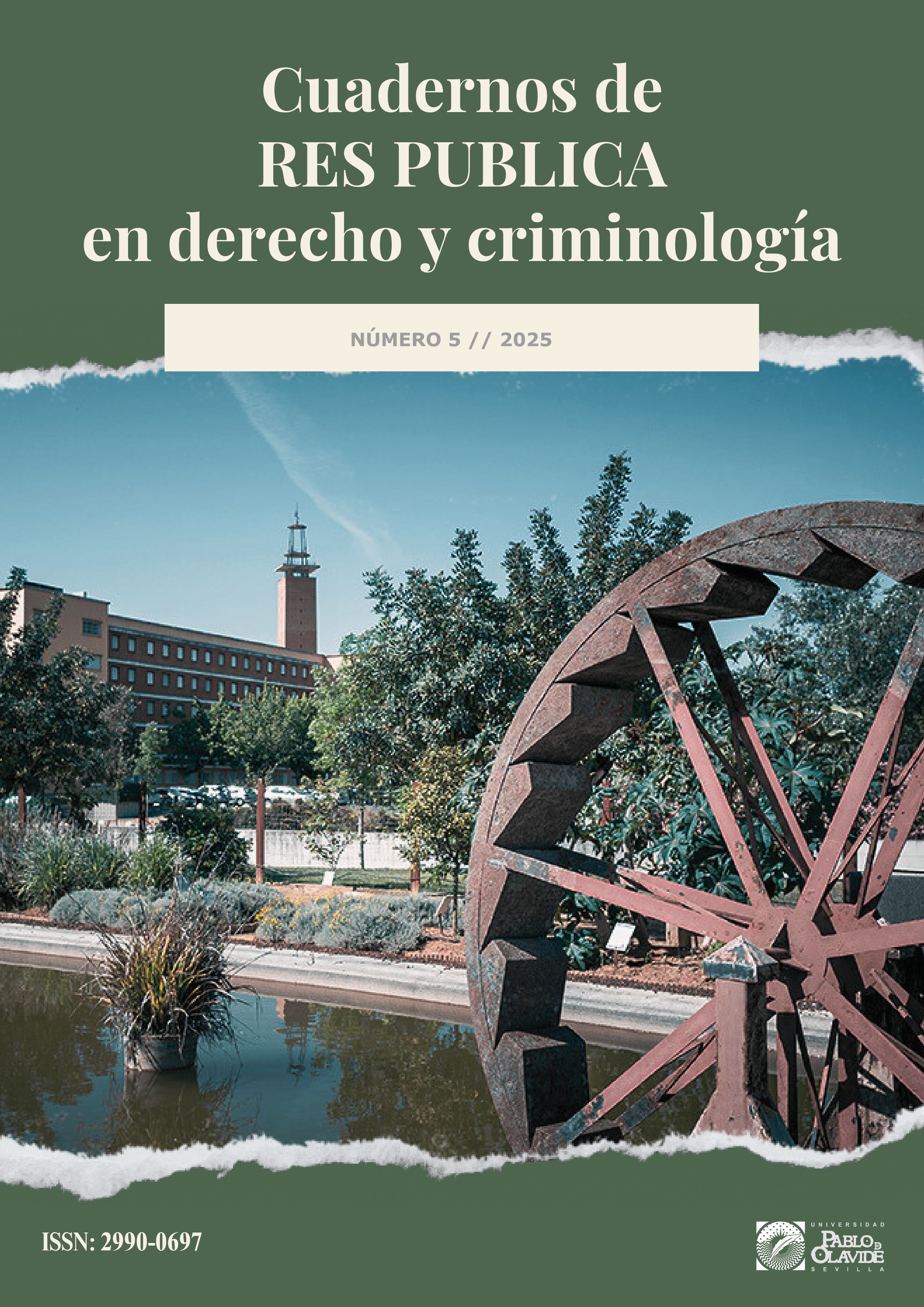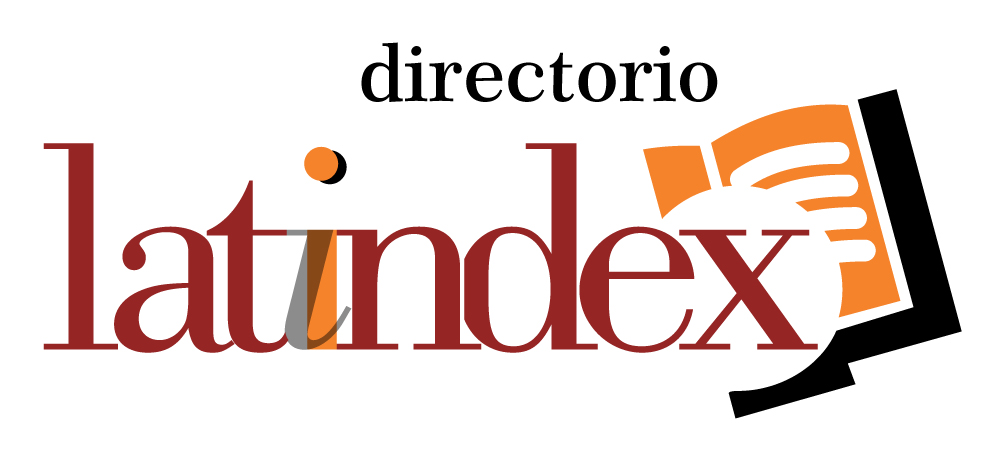La percepción del profesorado en formación ante el bullying y el ciberbullying
DOI:
https://doi.org/10.46661/respublica.11251Palabras clave:
profesorado, formación bullying, ciberbulliyng, violenciaResumen
El objetivo de este artículo es presentar una realidad acerca de la percepción sobre las causas del acoso y el ciberacoso que tienen los y las docentes. Se observa que existen diferencias entre hombres y mujeres en esta atribución y cuáles son los requerimientos de formación que presentan ante este fenómeno. Para la recogida de la muestra, se recogieron datos de un cuestionario creado por tres escalas. Los resultados indican que existen diferencias significativas entre profesoras y profesores en cuanto a la atribución causal del fenómeno violento. También se observó que las acciones de prevención terciaria también son distintas entre hombres y mujeres. En este sentido, los docentes requieren mayor formación en detección precoz del acoso y ciberacoso, frente a formación en el uso de las metodologías activas. El aprendizaje de herramientas de prevención primaria y secundaria sigue siendo un asunto pendiente en la formación de los docentes.
Descargas
Citas
AVILÉS MARTÍNEZ, José María. (2006). Bullying: El maltrato entre iguales. Agresores, víctimas y testigos en la escuela. Salamanca: Amarú Editorial.
AVILÉS MARTÍNEZ, José. Maria, TOGNNETA PAULINO, Luciene y PETTA DAUD, Rafael. (2020). Actuaciones del profesorado ante el bullying en contextos con y sin Equipos de Ayuda. Estudio en España y Brasil. Revista de Investigación en Psicología, 23(1). https://doi.org/10.15381/rinvp.v23i1.18091
BAIOCCO, Roberto, PISTELLA, Jessica., SALVATI, Marco, LOVERNO, Salvatore. & LUCIDI, Fabio. (2018). Sports as risk environment: homophobia and bullying in a simple of gay and heterosexual men. Journal of Gai & Lesbian Mental Health, 22(4), 385-411. https://doi.org/10.1080/19359705.2018.1489325
BALLESTEROS, Benjamín, PÉREZ DE VIÑASPRE, Santiago., DÍAZ, Diana., y TOLEDANO, Elena. (2017). III Estudio sobre acoso escolar y ciberbullying según los afectados. https://n9.cl/6s6yl
CALMAESTRA, Juan, ESCORIAL, Almudena., GARCÍA, Paloma., DEL MORAL, Carmela., PERAZZO, Catalina., y UBRICH, Thomas. (2016). Yo a eso no juego. Bullying y Ciberbullying en la infancia. Save the Children. https://n9.cl/nxo0i
CARRIÓN, ARCINIEGA. Cristina. Ana., y VEJA-OJEDA, Milena. Fernanda. (2019). Incidencia del Bullying o acoso escolar en la inteligencia emocional en los Estudiantes de la Escuela Fiscal Nº2 Ciudad de Loja. Dominio de las Ciencias, 5(1), 536-561.
CAMODECA, Marina, BAIOCCO, Roberto. & POSA, Ortensia. (2018). Homophobic bullying and victimization among adolescents: The role of prejudice, moral disengagement, and sexual orientation. European Journal of Developmental Psychology, 16(5). https://doi.org/10.1080/17405629.2018.1466699
DALLA POZZA, Virginia., DI PIETRO Anna, Morel, Sophie., & PSAILA, Emma (2016). Ciberbullying among Young people. European Parliament Policy Department for Citizen’s Rights and Constitutional Affairs. https://n9.cl/0te7j
DEL BARRIO, Cristina., ESPINOSA BAYAL Maria. Ángeles., MARTÍN, ORTEGA Elena., BARRIOS FERNÁNDEZ Angela., DE DIOS PÉREZ, Maria José., GUTIÉRREZ RODRIGUEZ, Héctor, MONTEROGARCIA - CELAY, Esperanza y la colaboración del Comité Español de UNICEF (2006). Violencia escolar: El maltrato entre iguales en la Educación Secundaria Obligatoria 1999-2006. Madrid: Publicaciones de la Oficina del Defensor del Pueblo, 2007.
DELGADO MORÁN, Juan. José. (2024). Acoso y agresión en las nuevas tecnologías: ciberacoso / ciberodio. AlmaMater. Cuadernos de Psicosociobiología de la Violencia: Educación y Prevención, nº 5, Dykinson, pp. 107-122. https://doi.org/10.14679/3315
DESSEl, Adrienne. (2010). Prejudice in schools: Promotion of an inclusive culture and climate. Education and Urban Society, 42(4), 407-429. https://doi.org/10.1177/0013124510361852
DÍAZ-AGUADO, Maria José. (2006). Acoso entre escolares. Dirección general de Familia, Consejería general de Familia y Asuntos Sociales, Comunidad de Madrid.
DÍAZ-AGUADO, María José., MARTÍNEZ ARIAS, Rosario. y MARTÍN BABARRO, Javier. (2010). Estudio Estatal sobre la Convivencia Escolar en la Educación Secundaria Obligatoria. Madrid: Ministerio de Educación.
ESPINOZA GUAMÁN Eimy Eliana, REYES HERAS Adriana Lorena., y GALARZA VALAREZO, María Alexandra. (2020). La diversidad cultural y la problemática con el bullying en el ámbito de la Educación Básica. Revista Metropolitana de Ciencias Aplicadas, 3(1), 57-62. https://doi.org/10.62452/j5gg7k84
ELLISON, Nicole B., STEINFIELD, Charles., & LAMPE, Cliff. (2007). The Benefits of Facebook ‘Friends’: Social Capital and College Students’ Use of Online Social Network Sites. Journal of Computer-Mediated Communication, 12, 1143-1168. http://dx.doi.org/10.1111/ - j.1083-6101.2007.00367.x
FERNÁNDEZ RODRÍGUEZ, Juan Carlos, DOMÍNGUEZ PINEDA Neidy Zenaida, MIRALLES MUÑOZ Fernando, & LIZ RIVAS Lenny. (2023). Conductas de riesgo y programas de prevención en adolescentes institucionalizados. Cuadernos de RES PUBLICA en derecho y criminología. (2), 42–56. https://doi.org/10.46661/respublica.8286
GABARDA MENDEZ, Cristina., CUEVAS MONZONIS, Nuria., MARTÍ ARAS, Antonia., LÓPEZ AGUSTÍ, Ana Isabel., y RODRÍGUEZ MARTÍN, Ana. (2022). Percepción del profesorado ante el Cyberbullying y detección de necesidades formativas del perfil competencial docente. REIDOCREA, 11(38), 458-466. https://doi.org/10.30827/Digibug.76395
GALLEGO-JIMÉNEZ, María Gloria., RODRÍGUEZ OTERO, Luis Manuel, y SOLÍS GARCÍA, Patricia. (2021). El bullying en el marco de la escuela inclusiva: revisión sistemática. Páginas De Educación, 14(1), 26-51. https://doi.org/10.22235/pe.v14i1.2258
GARRIDO ANTÓN, María José y GARCÍA COLLANTES, Ángel. (2022). El impacto de las tecnologías de la información y la comunicación en la educación. La importancia de la formación, la información y la sensibilización. Tecnología, Ciencia y Educación, 21, 155-182. https://doi.org/10.51302/tce.2022.660
GIMÉNEZ, Ana María., ARNAIZ, Pilar. y MAQUILÓN, Javier. (2013). Cyberbullying, la nueva cara de la violencia escolar. Saarbrücken
GIMÉNEZ-GUALDO, Ana María., y DEL CAMPO CARRIÓN, José Luis. (2018). El profesorado ante el" cyberbullying": necesidades formativas, capacidad de actuación y estrategias de afrontamiento. Bordón: Revista de pedagogía, 70(1) https://doi.org/10.13042/Bordon.2018.52067
JONES, Lisa., BELLIS, Mark., WOOD, Sara., HUGHES, Karen., Mc COY, Ellie., ECKLEY, Lindsay., BATES, Geoff., MIKTON, Christopher., SHAKESPEARE, Tom., & OFFICER, Alana. (2012). Prevalence and risk of violence against children with disabilities: a systematic review and meta-analysis of observational studies. The Lancet, 380, 899-907. https://doi.org/10.1016/S0140-6736(12)60692-8
JUVONEN, Jaana., & GROSS, Elisheva. F. (2008). Extending the School Grounds? Bullying Experiences in Cyberspace. Journal of School Health, 78, 496-505. http://dx.doi.org/10.1111/j.1746-1561.2008.00335.x
LIZ RIVAS, Lenny. (2024). Violencia y agresión entre iguales a través de las TICS: Cyberbulling. AlmaMater. Cuadernos de Psicosociobiología de la Violencia: Educación y Prevención, nº 5, 2024, Dykinson, pp. 89-105. https://doi.org/10.14679/3314
MARTÍ, M.A y ALABARTA, S. (2019). Protocolos de actuación frente al acoso escolar en los centros. Universidad Internacional de Valencia.
MARTOS, Alba., y DEL REY, Rosario. (2013). Implicación del alumnado con necesidades específicas de apoyo educativo en bullying. Apuntes de Psicología, 31 (2). https://doi.org/10.55414/ap.v31i2.321
MEYER, Elizabeth., TAYLOR, Catherine. & PETER, Tracey. (2015). Perspectives on gender and sexual diversity (GSD)-inclusive education: Comparisons between gay/lesbian/bisexual and straight educators. Sex Education, 15(3), 221-234. https://doi.org/10.1080/14681811.2014.979341
MUÑOZ, José Manuel. (2009). Prevención del acoso escolar (bullying). Revista Digital Innovación y Experiencias Educativas, 21 de agosto. http://www.csi-csif.
RODICÍO GARCIA, María Luisa. y IGLESIAS CORTIZAS, María Josefa. (2011). El acoso escolar diagnóstico y prevención. Madrid: Biblioteca Nueva.
RODRÍGUEZ RAMOS, Marta, y GORDON BENITO. Iñigo (2024). Introducción al monográfico especial sobre “Cuestiones en torno a los delitos de odio: Delimitación, impacto y expansión”. Cuadernos de RES PUBLICA en derecho y criminología, n.º 3. https://doi.org/10.46661/respublica.10280.
PÉREZ, Amparo., RAMOS, Genoveva., y SERRANO, Macarena. (2017). Acciones de prevención en acoso escolar utilizadas por docentes de Educación Secundaria Obligatoria. Contextos Educativos. Revista de Educación, 163–179. https://doi.org/10.18172/con.2954
OJEDA PÉREZ, Mónica. y DEL REY ALAMILLO, Rosario. (2021). Prevenir e intervenir en los riesgos asociados a las tecnologías de la información y la comunicación: el caso del cyberbullying. Tecnología, Ciencia y Educación, 19, 53-80.https://doi.org/10.51302/tce.2021.612
RIGBY, Ken. & JOHNSON, Kaye. (2016). The Prevalence and Effectiveness of Anti-Bullying Strategies Employed in Australian Schools. University of South Australia
OLWEUS, Dan, (1993). Bullying at school: What wek now and what we can do. Oxford: Blackwells. Trad. cast. Conductas de acoso y amenaza entre escolares Morata.
OLWEUS, Dan. (1998). Conductas de acoso y amenaza entre escolares. Morata.
ORCASITA, Linda. Teresa., VERA NORIEGA, José. Ángel., KUSSEROW, Magdalena., y MONTENEGRO CÉSPEDES, José. Luis. (2020). Percepciones y actitudes sobre homofobia en estudiantes universitarios. Health & Addictions/ Salud y Drogas, 20(2). https://doi.org/10.21134/haaj.v20i2.482
ORUE, Izaskun., CALVETE, Esther. y FERNÁNDEZ-GONZÁLEZ Liria. (2018). Adaptación de la Escala de Acoso Escolar Homofóbico y magnitud del problema en adolescentes españoles. Behavioral Psychology, 26(3), 437-455.
REAL DECRETO 275/2007, de 23 de febrero, por el que se crea el Observatorio Estatal de la Convivencia Escolar.
SÁNCHEZ, Raquel. y ESCRIBANO, Teresa. (2015). Cómo abordar la situación de marginación entre pares femeninos. Un estudio de caso en el tercer ciclo de Educación Primaria. Revista Complutense de Educación, 26(3), 647. https://doi.org/10.5209/rev_RCED.2015.v26.n3.44556
SERRANO, Ángela. (2006). Acoso y Violencia en la escuela. Cómo detectar, prevenir y resolver el bullying. Ariel.
SERRANO, Macarena. (2013). Profesorado de Educación Secundaria Obligatoria y Bullying: Prevención e Intervención Educativa. (Tesis Doctoral). Universidad de Valencia, Facultad de Filosofía y Ciencias de la Educación.
SKINNER, Burrhus. Frederic. (1975). Registro acumulativo. Fontanella.
TURKLE, Sherry. (2008). Always-on/Always-on-you: the tethered self. En J. E. Katz (Ed.), Hand book of Mobile Communication Studies (pp. 121-137). MIT Press Scholarship Online. https://doi.org/10.7551/mitpress/7445.003.0013
ULLOA LABBÉ, Luis. Herminio. (2015). Preconcepciones de maltrato escolar y su relación con autoestima, autoeficacia y apoyo social en escolares agresores y víctimas de ambos sexos, de edades entre 12 y 19 años de colegios subvencionados de la ciudad de Viña del Mar-Chile. Universidad de Málaga. Tesis Doctoral..
UNICEF. (2017). Estado Mundial de la Infancia 2017: Niños en un mundo digital. https://n9.cl/u0d9f
Descargas
Publicado
Cómo citar
Número
Sección
Licencia
Derechos de autor 2024 Antonia Martí Aras, Ana Isabel Agustí López , Ana Rodríguez Martín

Esta obra está bajo una licencia internacional Creative Commons Atribución-NoComercial 4.0.




